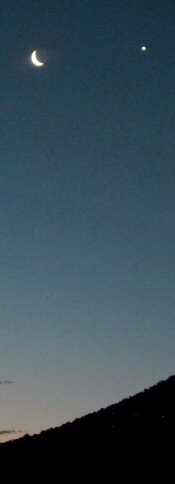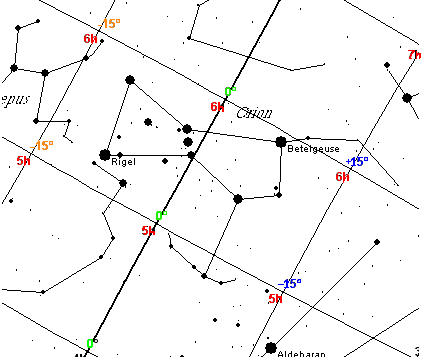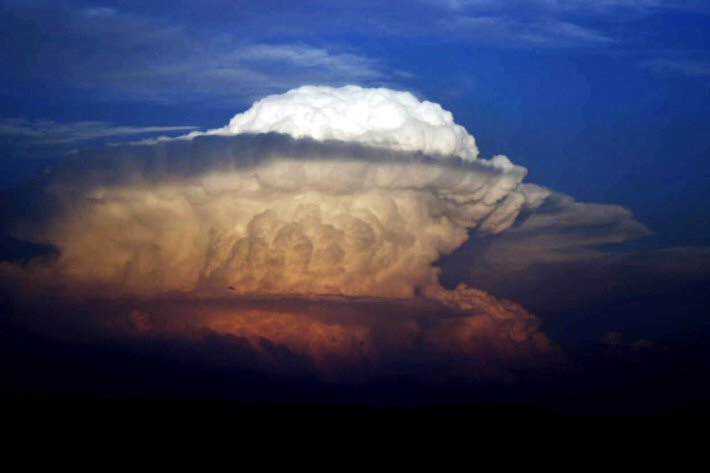SpaceTides
e-zine
#43 - 19 May 2006
Internet
Newsletter of ASSA Bloemfontein Centre, South
Africa, to the public
www.assabfn.co.za/spacetides
|

|
_________________________________________________________________________________________
Subscribe to the free SpaceTides e-zine by sending an e-mail to spacetides@assabfn.co.za
with the word "Subscribe" in the subject line if you are
not already subscribed.
|
|
In this issue of SpaceTides
|
INDEX
1. Spaceflight news from around the world
2. Astronomy news from around the world
3. Interesting space facts
4. Space Questions
5. Sky
Observation log
6. Amateur Astronomers' Corner
7. Astronomy & Science in Southern Africa
8. Astronomy
events in the City of Bloemfontein
9. Photo Sense
10. Web
links
|
Hello
SpaceTides subscribers
500 and counting...
First of all, a warm welcome to all new subscribers who subscribed
at ScopeX in Johannesburg
on 6 May 2006. Also new are those that subscribed at the David Malin show at Boyden on 7 May and the friendly people from
Excelsior in the Free
State who had an outing at the Observatory
earlier in the month. You helped to push the subscriber count above
500! All time record. Thanks to all the new and existing subscribers
for your continued support of SpaceTides.
Spaceport proposals in the US are coming in one after the other.
Though still in an infant stage, space tourism offers a revolution
in space travel - let's just hope the spaceport contractors get
business before tiring of the idea! See CNN
article. (Why not build a spaceport in the Karoo here in SA?)
ASSA Bloemfontein website:
the amateur astronomers of Bloemfontein
had an overhaul to their website, to keep pace with new developments
in web page design. See the website.
Other ASSA Centres: Chances are that you live near
one of the ASSA Centres - clubs for people interested in astronomy.
Find your nearest Centre by going to SpaceTides SA Astronomy Portal
and go to the ASSA Centres section.
Where to start with astronomy? There are many books in the
bookshop on astronomy, but they tend to say the same thing, only
in a different way. Invest in a comprehensive book (with many pictures!)
and don't forget your local library...
Gerrit Penning
Editor
Total subscribers as at 19 May 2006: 508 (+52 from
previous issue #42)
|
|
1. Spaceflight news from around the world
|
|

Artist
image of GLAST. Credit: General Dynamics C4 Systems
|
Preparing
GLAST for flight
Information adapted
from GFSC Press Release. 17
May 2006.
A milestone orbiting observatory, the Gamma-ray Large Area Space
Telescope (GLAST) is scheduled for launch in 2007. Assembly of its
primary instrument has been completed.
The mission brings together the astrophysics and particle physics
communities. By using the satellite, "physicists will
gain valuable information about the evolution of the universe and
physicists will search for signals that may even force revision
of some of the basic laws of physics", as stated by the telescope's
principal investigator, Peter Michelson of Stanford University.
The observatory will collect data in wavelengths much more energetic
than what our eyes can see or what optical telescopes such as Hubble
can detect. Objects under investigation will include e.g.
powerful particle jets emitted from black holes "and possibly
the theorized collisions of dark matter particles". Not only
is its primary instrument (the Large Area Telescope) about 30 times
more sensitive than previous gamma-ray detectors, but it also have
a much greater field of view. Watch this space...
|
_______________________________________________________________________________________
|

Artist's image of Venus Express at Venus. Image credit: ESA.
|
Venus
Express readies for Science phase...
Information
adapted from ESA
News. 9 May 2006.
The European Space Agency's Venus Express orbiter
reached its final operational orbit on 7 May 2006 (it was launched
on November 9, 2005 and arrived at Venus in April 2006).
When the probe reached the planet, it had to
perform various altitude maneuvers with its engines and thrusters
in order to gain its "average" operational orbit.
Its orbital range now varies between 66 000
km and 250 kilometres above Venus. It takes 24 hours for the spacecraft
to make one orbit around the planet. This orbit affords the best
observation points for the probe's objectives, consisting of e.g.
global observations of the atmosphere, of the surface characteristics
and of the interaction of the planetary environment with the solar
wind". The science
phase begins on 4 June 2006.
|
________________________________________________________________________________________
A new (and large) Huygens decent
movie is available on the JPL website. Go
to download page.
ESA's multi-media gallery with
photos and videos can be found at http://www.esa.int/esa-mmg/mmghome.pl
|
2. Astronomy news from around the world
|
|

Example: largest nearby dwarf, Large Magellanic
Cloud. JBO
|
The Sloan Digital Sky Survey (SDSS-II) announced the discoveries
of two new, very faint companion galaxies in the neighbourhood of
the Milky Way galaxy. The first was found in the direction
of the constellation Canes Venatici about
640,000 light years away. The second, much fainter dwarf lies towards
the constellation of Bootes.
This brings the total of dwarf galaxies near our Milky Way galaxy
to 14 (the most well known are the Large and Small Magellanic
Clouds - both visible even with the naked eye in the southern skies
- the LMC is pictured at left). Theory of galaxy formation
predicts that hundreds of clumps of "cold dark matter"
should be orbiting the Milky Way and each one might be massive enough
to host a visible dwarf galaxy.
The Milky Way, M31 (Andromeda galaxy) and M33 (Pinwheel) are the
largest members of the Local Group of galaxies. M31 and M33 also
have various dwarf galaxies in its close vicinity. Read more
about the Local Group at SEDS.
|
________________________________________________________________________________________
|

Photo of NGC3190. Credit: ESO.
|
The 2002 Discoveries of the two Supernovas in NGC 3190
Information
obtained from ESO News
Release. 11 May 2006.
The beautiful spiral galaxy NGC 3190 with its
tightly wound arms and a a twisted shape
lies in the constellation of Leo (the Lion). It is about 70 million
light years away and forms part of a small group of galaxies called
"Hickson 44".
NGC 3190 has an 'Active Galactic Nucleus' and is believed to host
a supermassive black hole in its bright, compact nucleus.
In 2002 a supernova (a huge exploding star) was discovered in NGC
3190 in March 2002 and shortly thereafter another one was discovered
in May 2002. It is a very rare event to discover two supernovas
in one galaxy in one century, left alone two in one year!
|
|
3. Interesting Space Facts
|
List of the 15 brightest stars
visible from Earth and their magnitudes. The
less the magnitude, the brighter the star:
|
1 – Sirius (-1.4)
2 – Canopus
(-0.7)
3 – Alpha Centauri (0.0)
4 – Arcturus (-0.04)
5 – Vega (0.03)
6 – Capella (0.08)
7 – Rigel (0.1)
8 – Procyon (0.12)
|
9 – Achernar (0.5)
10 – Agena (Beta Centauri) (0.6)
11 – Betelgeuse (0.7)
12 – Altair (0.8)
13 – Aldebaran (0.8)
14 – Acrux (0.9)
15 – Antares (1.0)
(values are approximate)
|
______________________________________________________________________________________
|
List
of 6 nearest star systems to the Sun and their distance in light years.
1. Alpha Centauri star system (consists of 3 stars orbiting
a central point):
Proxima Centauri (4.2)
Alpha 1 Centauri (4.3)
Alpha 2 Centauri (4.3)
2. Barnard's Star - a small red dwarf (6.0)
3. Wolf 359 (CN Leonis) (7.7)
4. Lalande 21185 (8.2)
5. Luyten 726-8A and Luyten
726-8B (UV
Ceti) (8.4)
6. Sirius double star system:
Alpha Canis Majoris
A (8.6) and B (8.6)
Compiled from various sources on internet. Complete list:
http://en.wikipedia.org/wiki/List_of_nearest_stars
|
|

The vast emptiness
of space...
|
What do you find between the stars
in the vast emptiness of space?
Well, emptiness. Virtually a vacuum! The space between stars consists
of almost nothing. Lone hydrogen atoms do float around, but at the
average density of about 1 atom per cubic centimeter. It can even
be as few as 0.1 atom per cubic centimeter!
More at http://hypertextbook.com/facts/2000/DaWeiCai.shtml
|
______________________________________________________________________________________
|

|
Do
all stars become black holes?
No.
Only so-called "massive" stars can become black holes.
Our star, the Sun, is not massive enough - in 4 to 5 billion years
it will explode after it ran out of its nuclear fuel and form a
white dwarf star located within a cloud of gas called a planetary
nebula. Stars with a mass of over 10 times the mass of the Sun will
explode as supernovaes and might eventually
become black holes. Black holes are the highly
compressed "remnants" of these massive stars and is
packed with so much matter that it creates a huge gravitational
pull, attracting anything within a certain distance.
Image: Digital Blasphemy.
|
|

|
This issue's sky watching log is
replaced by a piece on "sky watching tips!"
>From ASSA Bloemfontein's night sky course
for beginners.
In addition to a binocular or telescope,
you might also need the following while doing night sky observations:
Red filtered flashlight - Without a red-filtered flashlight, your eyes will never be able
to work in a dark adapted environment – essential for effective
observations. Simply put iced paper in front of your ordinary flashlight.
Try to buy rechargeable batteries and a charger,
it will save you lots of money and trouble!
Star charts / sky map - Without the right kind of star
charts, you will quickly loose interest in observations and may
even become frustrated. Books in the shops frequently have star
charts, but they are not always detailed enough or customized for
your location. Good star charts can be found in software programs
like Skymap, Starry Night and The Sky
or the free Cartes du Ciel.
Pencil & Notebook, Drawing sheet
and Report log
- Equipment necessary when you start logging your observations or
when you start drawing / photographing objects and report on its
characteristics.
Physical Environment, comfort and practicality
- Observing deep sky objects is NOT for the faint hearted. It takes
effort, time and dedication. So, make sure your physical environment
is as acceptable as possible. Dress for cold: cover your head, neck,
nose & ears and wear a jacket and appropriate trousers (jeans-only
are not the best of insulators against cold). Use a comfortable
chair when sitting.
Be
sure to have ALL your equipment within reach and at the ready. Check
everything before going outside. And have some snacks! (Image credit:
Jacques van Delft) More info on Deep
Sky on the ASSA Bloemfontein website.
|
|
6. Amateur Astronomers' Corner
|
|

Can you find the coordinates of Rigel
by looking at the map above? The R.A. lines run bottom-top and the
declination lines run left-right. What do you think is the coordinates
of Betelgeuse? Image credit: Skymap
|
Right Ascension and Declination
What does it mean if an object (e.g. the star Rigel
in Orion) is located in the sky on the following coordinates:
RA: 5 hours, 14.7 minutes Dec: minus 8 degrees and 11
minutes (-8°, 11’)? "RA and Dec" is a coordinate
system you will find on star charts. Imaginary lines in the sky:
Right Ascension work like a clock: the grid is divided
into 24 celestial lines, equal to the 24 hours on a clock. It starts
at 0 hours (or "24") and ends again at 0 hours. It is
the celestial equivalent of the longitude lines on Earth,
but measured in hours and not degrees. The 24 hours equal 360 degrees
though and each hour is equal to 15 degrees. So, how far would
an object have travelled in the sky in 1 hour's time? Yes, 15 degrees
(360/24).
One R.A. hour is divided
into 60 minutes, which in turn, is divided into 60 seconds. The
zero line of R.A. passes through the constellation of Pisces and
is measured eastwards until you reach 23 hours and 59 minutes. One
minute later, you are back at the zero line! Remember it as follows:
when you stand facing north, the R.A. lines "ascend at your
right" - they rise "parallel"
with the meridian from east to west.
Declination is just like latitude: it
is divided into lines from -90° to 0° and then to +90°. With
Dec, the “minus” means that you are south of the celestial
equator. The “plus” means north. Where in the sky would
you expect a star with declination -80 deg? Far south, near the
south celestial pole, only visible to those in the southern hemisphere.
Each degree is divided into 60 minutes and each minute is divided
into 60 seconds.
|
|
7. Astronomy & Science in Southern
Africa
|
|

|
MTN ScienCentre at Canal Walk
Century City
in Cape Town
This interactive science centre offers edutaining
fun while you learn about scientific discoveries and technological
innovations. There's over 280 displays
as well as an auditorium, camera obscura,
computer rooms, laboratories, and exhibition hall. Entertainment
for kids of all ages. Information from its website. Visit the website.
|
__________________________________________________________________________________________
For other SA Astronomy websites,
go to the SpaceTides SA Astronomy Portal at:
www.assabfn.co.za/spacetides/sa_astronomy.htm
|
8. Astronomy Events in the City of Bloemfontein
|
The
different astronomy organisations in the City, working hand-in-hand
to inform people about the
fascinating world of astronomy and spaceflight, can be contacted through
the following details:
|
Boyden Observatory: www.uovs.ac.za/boyden
One of the most publicly accessible observatories
of its kind on the continent, also housing SA's
third largest telescope. To arrange group visits to the Observatory,
phone Dawie van Jaarsveldt at +27 +51 - 401 2561.
Boyden open-evening on Saturday,
20 May 2006: do you want to know how it is to live in space?
Have you ever thought of becoming an astronaut? Learn more about
the highlights of space exploration and decide for yourself whether
you should have rather become an astronaut... Booking must
take place by phoning 051-401 2322.
R30 per vehicle. 18h00 for 18h30. Telescope and night sky viewing,
weather permitting. Great friends & family outing.
__________________________________________________________________________________________
|
|
The
Friends of Boyden: www.assabfn.co.za/friendsofboyden
A public interest group for Boyden Observatory and for people interested
in joining the astronomical community of Bloemfontein, but not necessarily make astronomy their hobby. Contact
Braam van Zyl at 051-436 7555
(h). Anyone can become a member.
__________________________________________________________________________________________
|
|
ASSA
Bloemfontein
Centre: www.assabfn.co.za
Affiliated with the Astronomical Society of Southern Africa,
the Bloemfontein Centre of ASSA is an active organisation of amateur
astronomers meeting on a regular basis to discuss and practice astronomy
as hobby. Activities include solar-, lunar-, deep sky- and comet
& meteor observations, as well as historical research, telescope
making, tours and away-weekends under dark skies. Send an e-mail
to mail@assabfn.co.za or visit the website.
News: The website of
ASSA Bloemfontein Centre has had a total overhaul: go to www.assabfn.co.za.
|
|

Hannes Pieterse
captured this impressive photo of an immense cloud from Boyden Observatory
in the Free State in February
2005. It looks like a nuclear explosion! You don't often see
this type of cloud in such great proportions from such an excellent
vantage point. Shutter speed: 1/500th sec. F/4, ISO 100.
|
_____________________________________________________________________________________________________________________
SpaceTides is a free internet e-zine
for persons interested in expanding their general
knowledge of astronomy and spaceflight.
The e-zine originates from the City of Bloemfontein in South Africa and is compiled us a
service to the public by ASSA Bloemfontein Centre
as part of their educational outreach activities. Website: www.assabfn.co.za.
SpaceTides contains links to various other third party sites on the
internet, not always connected to SpaceTides. The persons and entities
responsible
for compiling SpaceTides will not be held responsible for the content
or information on these third party sites or any damage of any kind incurred from
downloading, opening, or viewing anything from/through these sites.
If you would like to unsubscribe from SpaceTides, send an e-mail
to spacetides@assabfn.co.za with the word "Unsubscribe" in
the subject line.
_____________________________________________________________________________________________________________________________
|



